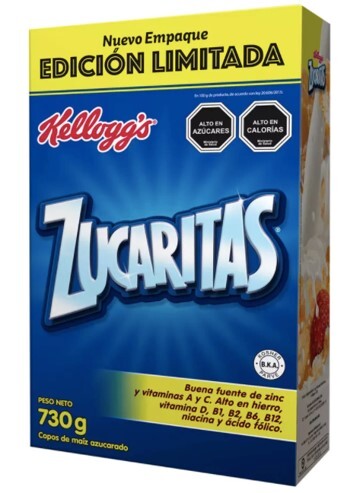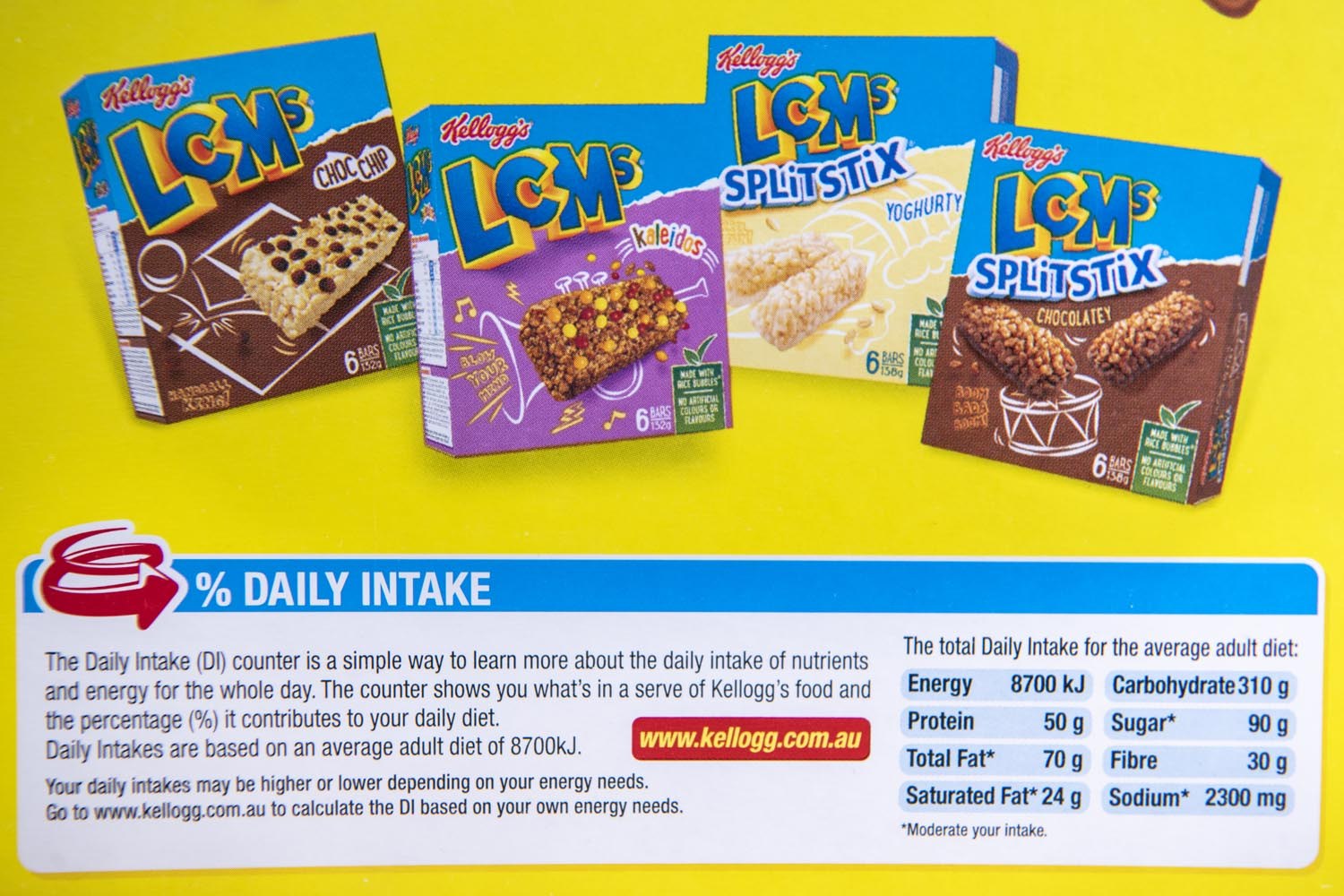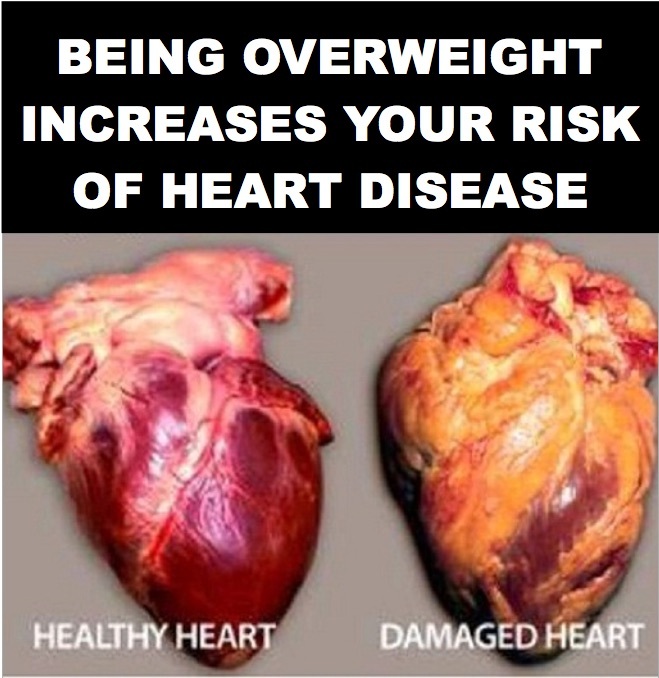Front-of-pack nutrition labelling
Front-of-pack (FOP) nutrition labelling schemes are designed to provide standardised summary information about the nutritional content of packaged food and beverages. Schemes led and supported by governments have been introduced in more than 43 countries and take different forms.
Key Evidence
Interpretive FOP systems provide consumers with some interpretation of the nutritional quality of food products to assist use and understanding
The Health Star Rating (HSR) is a front-of-pack nutrition labelling system in Australia and New Zealand, endorsed by the government for voluntary implementation by the food industry
Many countries around the world have implemented mandatory front-of-pack labelling systems, typically in the form of nutritional warning labels
Well-designed front-of-pack nutrition labelling schemes can contribute to healthier diets, with evidence indicating that interpretive FOP schemes typically perform better than non-interpretive systems
Recognising that many consumers may find back-of-Pack nutrition information complex to understand, the World Health Organization (WHO) recommends front-of-pack (FOP) nutrition labelling as a tool to promote healthier diets, and lists FOP labelling as a ‘best buy’ policy to address non-communicable disease.12
FOP labelling systems aim to provide standard, clear information on the nutritional content of packaged food items so consumers can readily identify healthier and less healthy options.3 Effective FOP labels typically employ logos, symbols, colours or ratings to simplify nutrition information and encourage healthier choices at a glance.
The policy objective is typically two-fold:
- to help consumers make healthier food choices, and
- to encourage industry to reformulate products to create healthier options.4
Implementation of Front of Pack labelling
Front of pack (FOP) nutrition labelling systems have now been implemented in 43 countries (where governments have led and supported their development), and systems are under consideration or development in many other countries.5 FOP systems vary by country, often tailored to local health priorities and consumer preferences, and can be mandatory or voluntary in nature.
Eleven countries have mandatory FOP labelling, including Argentina, Brazil, Chile, Korea, Canada (to be implemented from January 2026), Mexico and Sri Lanka. Voluntary initiatives have been implemented in 28 countries, including Australia, Belgium, New Zealand, France and Malaysia. . The FOP labelling policies of Colombia, Singapore, Thailand and Israel include mandatory and voluntary elements.5 Some countries that have voluntary initiatives, for example Australia, are now considering mandatory approaches given the relatively low levels of adoption of voluntary measures.6 Some countries, for example Mexico, have also amended or replaced the systems they use in response to evaluation data to ensure effectiveness.7
The World Health Organization has published a guiding framework manual on FOP nutrition labelling, to encourage government action and support policy-makers in developing, implementing and monitoring national regulation.8 The manual sets out five principles for FOPNL, including alignment with national public health and nutrition policies and food regulations, as well as WHO guidance and Codex guidelines. It also lists best practices for the development and implementation of FOP labelling systems, as well as monitoring and evaluation.
The WHO guiding framework manual outlines that FOP nutrition labelling initiatives can be implemented as voluntary or mandatory, and does not make an explicit recommendation on which approach is more effective. Other groups, including UNICEF and the World Cancer Research Fund, recommend that governments consider mandatory implementation to overcome problems with limited uptake of voluntary systems.910 There is some evidence to suggest mandatory FOP nutrition labelling policies, where all packaged foods must display a label, are likely to be more effective than voluntary initiatives.11 For example, two studies indicate the Health Star Rating supported healthier food choices when it was present on all foods shown to participants, compared to when displayed on only some products.1213 Studies also suggest mandatory implementation is likely to be required to overcome selective display of the Health Star Rating (where manufacturers label high-scoring products only, and omit to label low-scoring products)14, and encourage healthier reformulation of unhealthy products.15161718
The Codex Alimentarius Commission (Codex, the international food standards agency) has also developed Guidelines on Front of Pack Nutrition Labelling that set out a list of principles for the establishment of FOP nutrition labelling systems.19 These principles include that they should align with dietary guidance, be government-led with stakeholder consultation, be easy to understand and use, and be in a format supported by consumer research to help consumers make appropriate comparisons between foods. The Codex Guidelines do not endorse a particular FOPNL system and allow for both voluntary and mandatory systems. For more information about Codex and the interaction between nutrition labelling and trade law, please see this page.
Types of front of pack nutrition labelling systems
Front of Pack nutrition labelling systems can be broadly categorised as interpretive and non-interpretive.
Interpretive systems provide consumers with some interpretation of the nutritional quality of food products, relative to a standard. Interpretive systems can be further categorised into four subcategories11:
- Summary indicator systems provide an overall evaluation of a food’s relative nutritional quality. Examples include Australia and New Zealand’s Health Star Rating (ranging from half a star to five stars)20 and Europe’s Nutri-Score (color-coded scale from A to E).21 These systems are usually based on an algorithm that considers a variety of positive and negative food components and nutrients to assess a product’s overall nutrition quality.
- Nutrient-specific interpretive systems provide information on the content of individual nutrients, based on nutrient thresholds that meet a nutrition standard. For example, the UK’s traffic light system which colours each nutrient as green, amber, or red.22
- Negative nutrient-specific systems signal when the levels of risk nutrients (such as sodium, sugars or saturated fats) in the product exceed a standard. For example, Chile’s warning labels for food and drinks that have high levels of sugar, salt, saturated fat and calories.23 For more information, see the nutritional warning labels page.
- Endorsement logos provide a positive judgement on foods that meet a certain healthiness criterion. For example, the Nordic Keyhole (green keyhole symbol).24

Source: Delhaize
Non-interpretive or reductive systems show numerical information on nutrient content, without any additional guidelines on the nutritional quality of a food to facilitate consumer understanding. These include designs that incorporate nutrient amounts and their percentage contribution to daily recommended intakes. Examples include Guideline Daily Amounts in the United States or the Australian Food and Grocery Council’s Daily Intake Guide.4
There is now clear evidence that interpretive labels are more effective than non-interpretive labels in improving consumer understanding of the nutritional quality/content of foods and the healthfulness of food choices and purchases.251126 As such, the WHO recommends countries develop and implement FOP labels with interpretive designs, rather than non-interpretive labels.8

Source: Centro de Investigación en Nutrición y Salud, Instituto Nacional de Salud Pública, Mexico

Nutritional warning labels
An emerging area of interest is the use of nutritional warning labels on packaged food and drinks. The aim of nutritional warning labels is to highlight specific unhealthy components of food products.
Ten countries have implemented (or are in the process of introducing) mandatory nutritional warning labels. Chile has been a leader in this area, after they introduced (in 2016) mandatory black warning labels shaped like stop signs for packaged food and drinks that exceed limits for sugar, salt, saturated fat or energy.27 The implementation of warning labels in Chile is part of a comprehensive package of policies designed to improve the healthiness of population diets, including restrictions on marketing to children and foods for sale in schools.
There is increasing evidence to show that mandatory nutritional warning labels are contributing to healthier diets by supporting people to reduce purchases of less healthy foods282930 and prompting food manufacturers to reformulate products to reduce risk nutrients.3132
For more information, please see the page Nutritional warning labels.
Graphic health warnings
There is some emerging evidence that graphic health warnings, inspired by those on tobacco products, could lead to healthier dietary choices. For instance, an Australian study found that negatively framed graphic warnings prompted greater dietary self-control than text-based or positively framed labels.33
Another Australian study showed that FOP labelling had the potential to reduce purchases of sugary drinks, with graphic health warnings performing better than text warnings, sugar content information, or Health Star Ratings.34 In the US, a study showed that graphic health warnings led to a decrease in sugary drink purchases and an increase in water selection, further underscoring their potential positive impact on consumer behaviour.35

Effectiveness of Front of Pack nutrition labels
Research has consistently found that FOP labels support consumers in identifying and choosing healthier foods, and that interpretive labels perform better than non-interpretive systems.11363738394041 Evidence on which types of interpretive FOP systems are more effective is generally inconsistent.11 For example, compared to other systems, summary indicator systems have been found to better improve consumer understanding and the healthiness of food choices and sales in some studies. However, in other studies, labels with traffic light colour coding or nutrition warnings performed better than other interpretive systems. This variation in findings shows that it is essential to consider the country context when designing FOP systems, and to ensure that proposed systems are appropriate for the local population.8 Evidence shows, however, that other interpretive FOP labels (e.g., summary indicators, warning labels) tend to be superior to endorsement logos, as endorsement logos may lead consumers to incorrectly perceive labelled foods as healthier than unlabelled foods.11
Content for this page was updated by Jasmine Chan and Gary Sacks at GLOBE, Institute for Health Transformation, Deakin University and reviewed by Damian Maganja at The George Institute for Global Health. For more information about the approach to content on the site please see About | Obesity Evidence Hub.